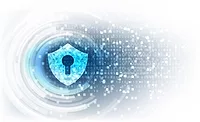Digital trust: Toward a brighter future of the internet

Thinkhubstudio / iStock / Getty Images Plus via Getty Images
The recent global pandemic has shown that the internet has become much more than just a communications and commerce platform. Today, it has become an essential part of society, providing a foundation for information, interaction, self-expression and personal connections across the entire world. We’re now in a world where digital transformation is the word of the day.
The unprecedented growth and reach of the internet are unlocking new economic opportunities for billions of people, but they have also introduced some major challenges. Many people still face accessibility barriers, while cybersecurity risks are undermining the trust and reliability that are essential. To keep our increasingly connected environments free and secure for everyone to operate with full privacy, governments and the technology community and corporate boardrooms need to invest in digital trust.
Recognizing the internet’s fundamental role in driving digital transformation, the U.S. government teamed with 60 global partners to develop A Declaration for the Future of Internet. Released in April 2022, this Declaration is intended to demonstrate a political commitment by these partners to advance a positive vision for the internet and digital technologies.
By signing on to the Declaration, these partners have reaffirmed their commitment to a global Internet that is “truly open and fosters competition, privacy and respect for human rights.” The Declaration also emphasizes the need to safeguard privacy as a means to promote trust in the global digital ecosystem.
Digital trust is fundamental
What makes digital trust so essential to the internet and digital transformation? It gives individuals the confidence that interactions, purchases, business processes and other activities retain their security and integrity.
For example, IoT environments rely on data from sensors and devices to help organizations respond to events and make informed decisions. Digital trust is critical for assuring that this data has been provided by an authentic source and has not been compromised or altered. For example, if a sensor on a medical pump in a hospital environment is not generating dependable data, the impact on patient safety could be severe.
Digital trust provides peace of mind for interactions in our increasingly connected world. However, assuring a high level of trust isn’t easy. In the past, organizations could simply secure the enterprise network perimeter to ensure a robust level of trust in their environments.
Today, users, their applications, documents, and devices may extend across a broad range of locations and environments, including cloud services, hybrid workloads, and remote and home offices. The past boundaries that separated developers and IT operations are also breaking down as organizations adopt new DevOps-centric processes.
The pillars of digital trust
What are the key requirements to ensure digital trust? Its three critical elements include:
- Authentication: Organizations must authenticate the identity of users, workloads, services and containers, as well as machines and devices
- Integrity: Digital trust requires organizations to take steps to ensure that an object and its data have not been altered or tampered with
- Encryption: Protecting data as it is transmitted is vital
These three requirements complement one another, enabling the assurance needed for digital interactions, processes and transactions. Public key infrastructure (PKI) digital certificates support them. PKI is a proven technology that has been widely adopted for a variety of use cases and allows organizations to establish and confirm identity, integrity and encryption, to establish a strong level of trust between people, systems and things.
Augmenting PKI for more robust digital trust
PKI is a powerful enabling technology for the three key pillars that make up the digital trust foundation. However, it’s just the beginning. To fully implement a trust initiative, organizations need additional elements, including standards, compliance and operations, trust management and connected trust capabilities.
Standards
Standards are what define the specifics of trust for an industry or technology. Some examples include the standards that certification authorities (CAs) must meet to be considered “trusted,” designated by vendors of Internet browser software and other stakeholders that utilize X.509 v.3 digital certificates for SSL/TLS, code signing and S/MIME. Other industry examples include the Matter standard for smart home devices and IoT platforms.
Compliance and Operations
Compliance and operations make up the second element of digital trust. Regulations are constantly changing and evolving, and organizations must ensure compliance policies, audits and other processes to confirm that their operations fully conform to local laws and industry standards.
Trust Management
Trust management is increasingly essential to keep the growing numbers of digital certificates current. Trust management can minimize manual processes associated with managing certificate lifecycles, using business process automation. Trust management can also help ensure that organizations remain in full compliance with their security policies, by helping minimize rogue activities.
Connected Trust
Connected trust is the fourth key element of digital trust. Connected trust helps organizations extend the final essential building block of digital trust, and helps organizations strengthen and extend the continuity of trust across complex device lifecycles, software supply chains and sophisticated ecosystems.
Today’s top IT imperative is digital trust
The Declaration of the Internet underscored the growing importance of the internet to today’s businesses and societies worldwide. The escalating volume of connected users and devices, together with increasing complexity, have elevated digital trust from an IT priority to a boardroom imperative. Today’s technology executives are focused on protecting not only their own businesses but their partner ecosystems, their end customers and ultimately, their communities. Crafting a robust digital trust strategy is key to assuring that our increasingly connected digital environments and processes remain safe and secure.
Looking for a reprint of this article?
From high-res PDFs to custom plaques, order your copy today!








